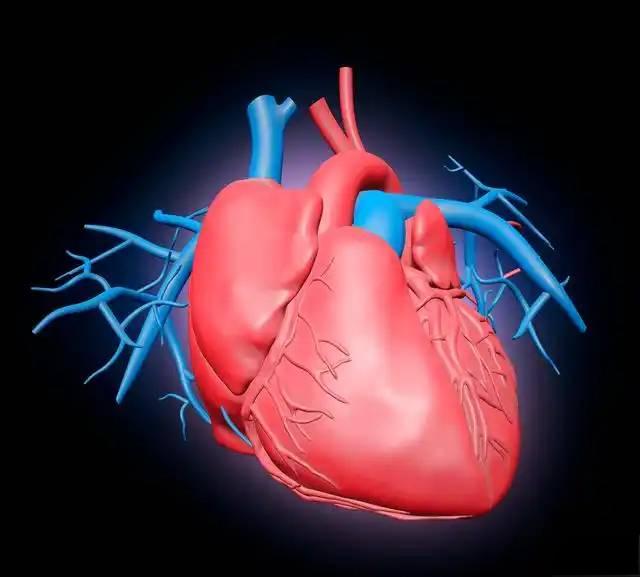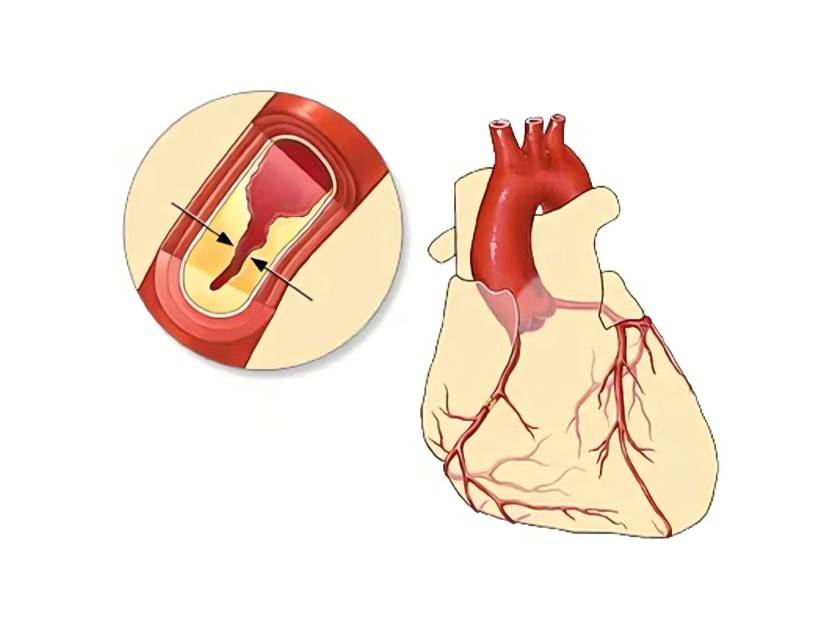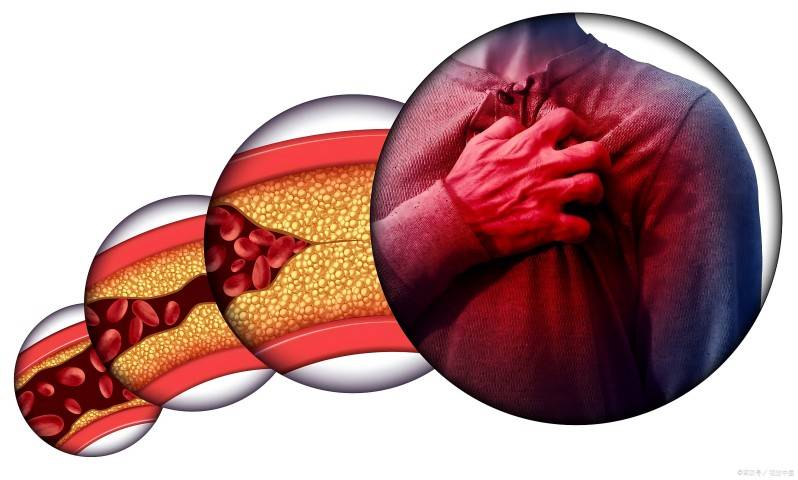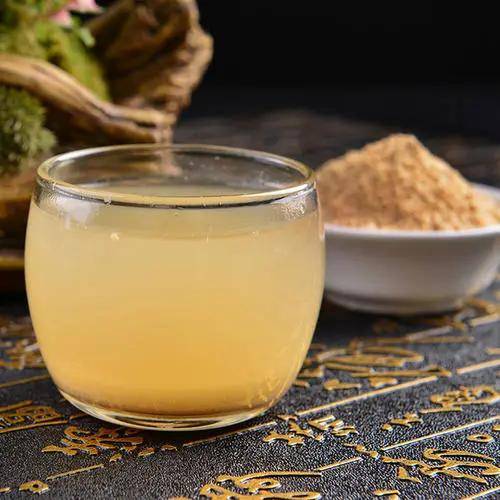Исследование женьшеня и сердечно-сосудистой системы
Modern pharmacological studies have confirmed that ginsenosides (GS) are the main active substances in ginseng. To date, more than 30 types of ginsenosides have been isolated from ginseng [1]. The total saponin is called ginsenoside R x, and each component is named R o, R a, R b1, R b2, R b3, R c, R d, R e, R f, Rg1, Rg2, Rg3, R h1, R h2, and R h3 in ascending order of the R f value from a thin-layer silica gel chromatogram. However, in recent years, most research on ginseng saponins has focused on R b1, R e, Rg1, R h2, etc. Ginseng saponins can be divided according to their chemical properties into: ginsenoside diol type (type A), including R b1, R b2, RC, R d, R h2, etc.; ginsenoside triol type (type B), including R e, R f, Rg1, Rg2, R hr, etc.; oleanolic acid type (type C) such as R o. Modern research has shown that ginsenosides have clinical significance for various diseases of the cardiovascular system, such as ischemic heart disease, arrhythmia, and heart failure [2]. The following is a summary of recent research on the pharmacological effects of ginsenosides on the cardiovascular system.
1. Воздействие на миокардную функцию
Тянь цзяньмин и др. [3] использовали in vitro культуру кардиомиоцитов для подготовки модели гипоксических и глюкозодефицитных кардиомиоцитов, и обнаружили, что женьшень Rg2 значительно увеличил биение амплитуды и выживаемость гипоксических и глюкозодефицитных кардиомиоцитов. В ходе экспериментов было также отмечено, что Rg2 значительно снизил концентрацию свободного Ca2+ в гипоксических и глюкозодефицитных кардиомиоцитах, хотя и не оказал значительного воздействия на высвобождение Ca2+ из кардиомиоцитов, вызванных KC l. При высоких концентрациях он оказал мягкого ингибиторного воздействия на приток внеклеточного Ca2+, вызванного CaC l2, в то время как при низких концентрациях он не оказал значительного воздействия [4].
Wang Tianxiao et al. [5] established a pressure overload ventricular remodeling model by ligating the abdominal aorta of rats to study the effect of Женьшень RbНа реконструировании желудочника у крыс с перегрузкой давления миокардной гипертрофией и механизмом ее действия. Установлено, что жензенозид рб оказывает защитное воздействие на регенерацию желудочника у крыс, что может быть связано с механизмом улучшения систолической и диастолической функции левого желудочника у крыс с регенерацией желудочника, повышением антиоксидантной ферментной активности, уменьшением повреждений миокарда, вызванных свободными радикалами и вазосустрикторными веществами, а также коррекцией дисбаланса между пги2 и TXA2.
Su Dayuan et al. [6] также изучили протопанаксиол группы сапонинов (PQDS), взятых из листьев американского женьшеня, и обнаружили, что PQDS может эффективно предотвратить редукцию желудочника после инфаркта миокарда у крыс, значительно увеличить максимальную скорость увеличения и уменьшения внутривенного давления левого желудочника, а также значительно уменьшить объем левого желудочника, длину левого желудочника по оси, длину левого желудочника по короткоосевой оси, Абсолютный вес левого желудочка и относительный вес левого желудочка. Кроме того, PQDS может значительно снизить сыворотку липидных пероксидов и уровни миокарда ангиотенсина II и адреналина, а также увеличить димутазу супероксида, каталазу и глутатионовую пероксидазу. Предполагается, что это может быть связано с подавлением местного производства ангиотенсина II в сердце и подавлением высвобождения catecholamines из симпатических нервных окончаний, а также с улучшением антиоксидантной способности сердечной мышцы.
Кроме того, исследования сапонинов женьшеня (GFS) показали, что GFS может улучшить систолические и диастолические функции сердечной мышцы, облегчить отказ насоса после инфаркта миокарда и снизить потребление кислорода миокарда, что благотворно влияет на увеличение кровотока миокарда.
2 воздействие на кардиогенный шок
Собачья модель кардиогенного шока и сердечной недостаточности была создана с использованием пентобарбитального натрия. Наблюдались эффекты женьшеня на кровяное давление (вр), систолическое давление левого желудочка (LVSP), повышение давления левого желудочка (LVdp/dtmax), сердцебиение (HR) и выход сердца (CO). Результаты показали, что общий объем женьшеня сапонинов 10 мг/кг и 20 мг/кг, после внутривенного введения, LVdp/dtmax, LVSP, BP и CO-все увеличился, давление левого желудочника в конце диастолия (LVEDP) снизилось, а HR замедлился. Lv Wenwei et al. [8] подготовили кинологическую модель кардиогенного шока путем лигирования передней нисходящей ветви коронарной артерии и внутривенно ввели rg20,5, 1 и 2 мг/кг, соответственно.
They found that Женьшень Rg2 can significantly increase the mean arterial pressure (MBP), left ventricular end-diastolic pressure and maximum change rate (±dp/dtmax), cardiac output; significantly reduced total peripheral resistance, elevated ST segment of the heart surface electrocardiogram; reduced the scope of myocardial infarction; reduced serum creatine kinase (CPK), lactate dehydrogenase (LDH) and aspartate aminotransferase (AST) activity; increased arterial and venous oxygen content, and reduce myocardial oxygen consumption index and myocardial oxygen uptake rate. It can reduce the damage to myocardial cells and their mitochondria, and has a significant protective effect on ischemic myocardium in dogs with cardiogenic shock. Later, by studying the effect of ginsenoside diol-saponin (PDS) on acute cardiogenic shock [9-10], it was found that PDS can significantly increase MBP and dp/dtmax in shocked dogs; significantly reduced the concentrations of serum inflammatory cytokines interleukin-1 (IL-1), interleukin-6 (IL-6) and tumor necrosis factor-a, and reduced myocardial ischemia and the extent of ischemia, shrinking the area of myocardial infarction, lowering whole blood viscosity and hematocrit, and protecting dogs with acute cardiogenic shock.

3 воздействие на миокардную ишемию-реперфузию
Тянь цзяньмин и др. [11] переливали переднюю нисходящую ветвину коронарной артерии крыс, ослабили лигатуру через 3 часа, восстановили кровоток на 20 минут и быстро удалили сердце. Был выявлен апоптоз, и тест показал, что предварительное введение Rg 21,0 и 2,0 мг/кг может уменьшить индуцированный искемией апоптоз и значительно сократить диапазон фрагментации ДНК, индуцированный искемией. Женьшень сапонин R e может ингибировать миокардиальный апоптоз путем ингибирования выражения про-апоптотического гена Bax и увеличения соотношения Bcl-2/Bax.
Взрослым собакам-монгрелу вводили две внутривенные инъекции физиологической соли, содержащей общий женьшень (12,5 мг/кг), за 1 час до аортального окклизирования и сразу после реперфузии. Гемодинамические параметры, внутриклеточная концентрация свободного кальция, митохондриальное фосфолипидное содержание кардиомиоцитов, митохондриальный кальциевый напор, миокардиальная гистохимия измерялись через normothermic extracorporeal циркуляцию. Было установлено, что при 30 и 60 минутах реперфузии женьшень может значительно улучшить систолическую и диастолическую функцию в период реперфузии, значительно снизить концентрацию свободного кальция в кардиомиоцитах, увеличить содержание митохондриального фосфолипида и активность митохондриального кальциевого насоса, а также значительно снизить частоту аритмий.
Гистохимическая экспертиза миокарда показала, что женьшень может поддерживать структуру тканей миокарда в целом нормальной после ишемии-реперфузии. Механизм женьшеня от миокардной ишемии-реперфузионных повреждений предназначен главным образом для защиты деятельности митохондриального кальциевого насоса в кардиомиоцитах, снижения степени деградации митохондриальных фосфолипидов, защиты целостности мембранной системы; И снижает концентрацию внутриклеточного свободного кальция, предотвращает перегрузки кальция в кардиомиоцитах и избегает реперфузионных повреждений миокарда.
Ку шаохун и др. [12] подготовили экспериментальную модель повреждения миокарда ишемией-реперфузией путем лигирования передней нисходящей ветви коронарной артерии у крыс в течение 30 минут, а затем репарфузии в течение 24 часов.Ginseng Rb group saponins (G-Rb) were given to rats at doses of 25, 50 and 100 mg/kg·d-1 by continuous gavage for 7 days. it was found that G-Rb has a significant protective effect on experimental myocardial ischemia-reperfusion injury in rats, which may be related to its mechanism of enhancing the activity of antioxidant enzymes, reducing oxidative damage to the heart muscle by free radicals, correcting the imbalance between PGI2 and TXA2, and inhibiting platelet aggregation activity.

В работе Song Qing et al. [13] изучался защитный эффект предварительной подготовки женьшеносида сапонина (GSLS) на повреждение миокарда искья-реперфузия (I-R) самопроизвольно гипертонизирующихся крыс (SHR) и их возможные механизмы. SHR давали GSLS 50 и 100 мг/кг Один раз в сутки через гаваж в течение 3 недель перед моделированием I-R, а кровяное давление крыс, сердечная функция и гемодинамические показатели сердца измерялись во время ишемии в течение 40 мин. и реперфузия в течение 30 мин. биохимические методы использовались для определения активности миокарда, лактатной дегидрогеназы (LDH) и супероксидной димутазы (сод) и малодиалдегида (MDA) и содержания NO, Для определения содержания металлотионина (MT) в сердце и печени использовался метод насыщения кадмием гемоглобина, а для определения выражения белка теплового удара 70 (HSP70) использовались иммуногистохимические методы. Было установлено, что группы предварительной адаптации GSLS 50 и 100 м/кг значительно улучшили сердцебиение, пиковое левое желудочное давление и ±dp/dtmax поврежденного SHR, значительно повысили активность миокарда атпазы, уменьшили утечки LDH, увеличили активность миокарда сод, увеличили содержание NO, уменьшили содержание MDA, увеличили содержание миокарда и печени MT, а также увеличили процент положительных клеток миокарда HSP70. Его механизм действия связан с улучшением контрактной функции сердца овч, улучшением миокардного обмена, повышением антиоксидантной активности и стимулированием высвобождения эндогенных защитных веществ миокарда.
4 воздействие на инфаркт миокарда
Лу фэн и др. [14] установили модель острого инфаркта миокарда путем лигирования левой передней нисходящей ветви коронарной артерии (юноша) у собак. Исследование показало, что женьшень Rb1 оказывает значительное защитное воздействие на острый ишемический миокард, и механизм действия может быть связан с его коррекцией метаболических нарушений свободных жирных кислот (FFAs) во время ишемии миокарда и его способностью выкапывать свободные радикалы для предотвращения липидного пероксирования, а также повышения активности антиоксидантных ферментов в организме. Американский женьшень 20 -protopanaxadiol группа сапонин (PQDS) также оказывает защитный эффект на острую миокардиальную ишемию, и этот механизм может быть связан с его подавлением сочувственной гиперактивности надпоральной мдуллы, снижением гиперсекреции катехоламина (CA) и подавлением активации RAS, сокращением производства ангиотенсина (Ang) и разрывом порочного круга, вызванного взаимным продвижением CA и RAS. Женьшень сапонин (GFS) также оказывает защитное воздействие на острую ишемию миокарда, вызываемую изопротеренолом и гипофизом, аденылатно-активационным полипептидом. Женьшень сапонин Rg2 оказывает защитное воздействие на химическую ишемию миокарда у крыс, приготовленных с помощью изопротеренола, нитрита натрия и полипептида гипофиза аденылата цикциклетного действия.
Liu Jie et al. [15] установили модель острого инфаркта миокарда путем перевязки юноши у собак. После моделирования, женьшень PDS был введен в бедренную вену в двух дозах 12,5 и 25 мг/кг. Было установлено, что обе дозы могут значительно снизить скорость инфаркта миокарда. Из ультра-структурного наблюдения видно, что атомная мембрина кардиомиоцитов в группе малых доз ПДД не повреждена, ядро было неустойчивым, структура саркомера вокруг ясна, митохондрия расположена в продольном направлении между миофилами, а небольшие везиклы видны в цитоплазме; В группе высоких доз ПДД структура мембранной клетки миокарда не повреждена, структура темных и светлых полос саркомера ясна, расположение миофиламентов относительно аккуратно, миохондрия между миофиламентами относительно велика, расположена в продольном направлении, а кристае хорошо видно. В обеих группах доз уровни NO и синтазы оксида азота (NOS) в сыворотке значительно возросли через 4 часа после введения препарата.

Jin Yan et al. [16,17] studied the effects of ginsenoside Rg1 on neovascularization after acute myocardial infarction and its mechanism of action. An acute myocardial infarction model was established in Wistar rats, and the rats were given ginsenoside Rg1 low-dose (1 mg/kg) and high-dose (5 mg/kg) treatment groups by intraperitoneal injection. RT-PCR was used to detect the expression of vascular endothelial growth factor (VEGF) and hypoxia-inducible factor-1α (HIF-1α) mRNA in myocardial tissue in the infarct zone. The results showed that the treatment group had significantly lower myocardial enzymes and myocardial infarction areas, and the number of blood vessels in the infarct area increased steadily and continuously, which was significantly higher in the treatment group than in the control group. After myocardial infarction, the expression of VEGF and HIF-1α mRNA increased with the prolongation of ischemia (3, 7 and 10 d groups), and the treatment group showed a significant increase. At 14 d, the increase in VEGF stopped or decreased, while HIF-1α continued to rise; the VEGF expression in the sham operation group was significantly lower than that in each of the operation groups. Studies have shown that the acute phase of severe ischemia can stimulate myocardial tissue to produce large amounts of VEGF and HIF-1α, thereby protecting ischemic myocardium. Ginseng saponin Rg1 can stimulate angiogenesis in the myocardial infarction area and the establishment of collateral circulation by increasing the expression of the two.
In summary, pharmacological research on ginsenosides in cardiovascular medicine has already begun and continues to deepen. While continuously extracting and modifying to obtain more ginsenoside-type active substances, research on the pharmacological activity of ginsenosides is expected to identify compounds with stronger activity and specificity, accelerating the industrial production and clinical application of ginsenoside ingredients. Theoretical and systematic summaries of current research results on ginsenosides are of profound research significance.

Ссылки на статьи
[1] чжу ляньцай, ван бочу, тан цзюнь. Влияние экстракта гинкго билоба и женьшеня на вазоактивные вещества. Журнал чунцинского университета (издание естественных наук), 2007, 30 (4): 136
[2] ван цян, мо сюэмей, ян сяоин. Современный научно-исследовательский прогресс женьшень в лечении сердечно-сосудистых заболеваний. Достижения в области сердечно-сосудистых заболеваний, 2006 год, 27 (3): 325
[3] тянь цзяньминь. Влияние женьшеня рг -2 на амплитуду и выживаемость клеток миокарда. Китайский журнал новых лекарств, 2003, 12 (11): 912
[4] ли тайпин. Прогресс в исследовании фармакологической деятельности женьшеня сапонина. Биология преподавания, 2003, 28(4): 1
[5] ван тяньсяо, юй сяофенг, цюй шаочюнь. Влияние женьшеня Rb на желудочно-кишечную регенерацию у крыс с гипертрофией миокарда под давлением и ее механизмом действия. Ши чжень, традиционная китайская медицина, традиционная китайская медицина, 2008, 19 (7): 1615
[6] суй даян, юй сяофэн, цю шаочюн. Влияние американского женьшеня листа 20 -protopanaxadiol группы сапонинов на экспериментальную реконструкцию желудочника у крыс. Китайский фармацевтический журнал, 2007, 42 (2): 108
[7] He Xiaoxi, Qu Shaochun, Yu Xiaofeng. Влияние женьшеня фруктовых сапонинов на гемодинамику у собак с острым инфарктом миокарда. Журнал джилинского университета (медицинские науки), 2008, 34(2): 204
[8] Lv Wenwei, Liu Jie. Защитный эффект женьшеня Rg2 на клетки миокарда у собак с острым кардиогенным шоком. Журнал джилинского университета (медицинские науки), 2003, 29(4): 392
[9] лю ж. эффекты женьшенозида Rg2 на сыворотке ил -1 у собак с острым кардиогенным шоком. Традиционная китайская медицина, 2005, 27(11): 1304
[10] Wang QJ, Liu J, Liu F. защитное воздействие женьшеносида диол-сапонин на острый кардиогенный шок у собак. Журнал джилинского университета (медицинские науки), 2005, 31(4): 557
[11] тянь цзяньминь, чжэн шуцю. Защитный эффект женьшенозида Rg2 на апоптоз клеток миокарда, вызванный поражением миокарда ишемией-реперфузией у крыс. Китайский фармакологический бюллетень, 2004, 20(4): 480
[12] ку шаочюн, суй чэн, юй сяофенг. Защитное воздействие женьшенозида рб на экспериментальную миокардную ишемию-реперфузию у крыс. Журнал джилинского университета (медицинские науки), 2007, 33(5): 849
[13] сон цин, чжан сяоуэн, сюй чживэй. Защитный эффект предварительной обработки женьшеня на повреждение миокарда ишемией-реперфузией у самопроизвольно гипертонизирующихся крыс. Китайский журнал фармакологии и токсикологии, 2008, 22
(1): 42
[14] Лу фэн, суй даян. Влияние американского женьшеня листьев 20 -protopanaxadiol сапонинов на симпатические нейропередатчиков и ренин-ангиотензиновой системы у крыс с острым инфарктом миокарда. Китайская травяная медицина, 2001, 32(7): 619
[15] Liu J, Liu F, Wang QJ. Влияние женьшеня на сыворотки оксида азота и синтазы оксида азота у собак с инфарктом миокарда. Китайский журнал экспериментальных ТКМ, 2008, 14(4): 46
[16] джин и лю н. Влияние женьшенозида Rg1 на зивоварение у крыс с острым инфарктом миокарда. Журнал китайского медицинского университета, 2007, 36 (5): 517
[17] чжин ян, лю гинан. Влияние женьшеня Rg1 на вегф и HIF-1α после острого инфаркта миокарда. PLA Medical Journal, 2006, 31 (11): 1079


 Английский язык
Английский язык Французский язык
Французский язык На испанском языке
На испанском языке Русский язык
Русский язык Корейская народно-демократическая республика
Корейская народно-демократическая республика На японском языке
На японском языке




